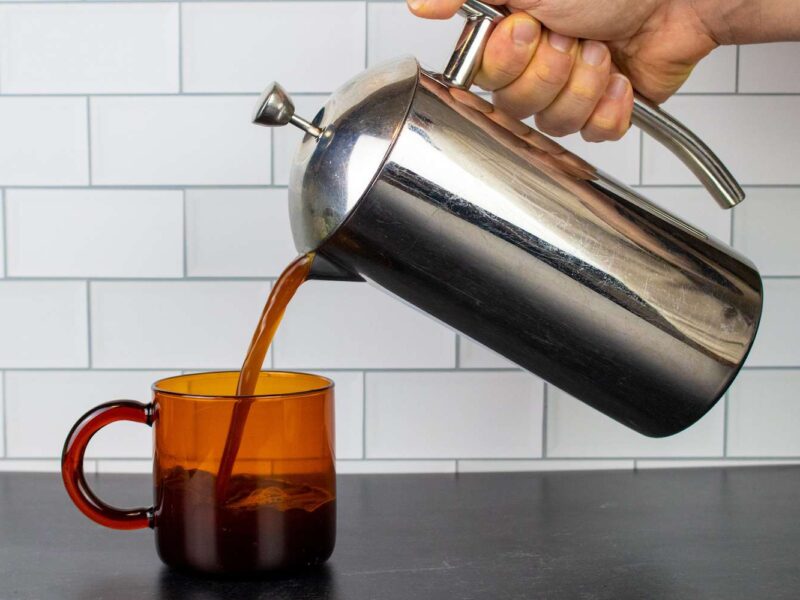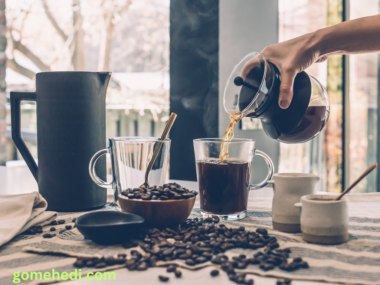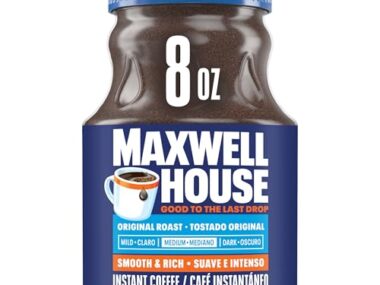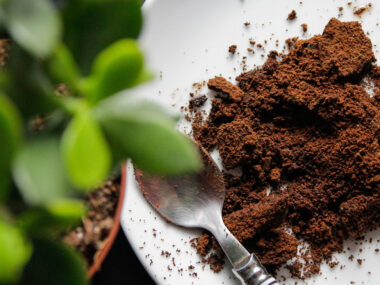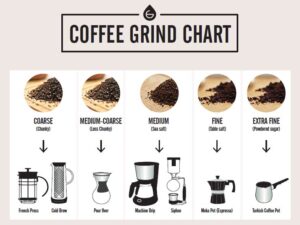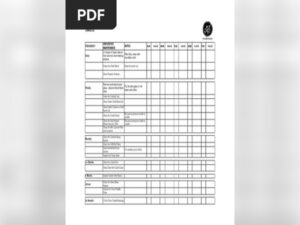Making a perfect French press coffee requires precision. If you want to learn how to make a perfect French press coffee, start with the right coffee-to-water ratio and ideal brewing time for a rich, smooth flavor.
These key steps ensure a rich and flavorful cup every time. French press coffee is loved for its bold taste and simplicity. Unlike drip coffee, it allows full immersion of coffee grounds, extracting more flavor. This method is ideal for those who appreciate a robust coffee experience.
To brew a perfect cup, you need fresh coffee beans and clean equipment. The process involves a few easy steps, but attention to detail makes all the difference. Whether you’re a coffee enthusiast or just exploring, understanding this method enhances your coffee-making skills. Dive into the art of French press brewing and discover how to achieve that perfect cup every morning.
Choosing The Right Beans
Making the perfect French press coffee starts with choosing the right beans. The type of coffee beans you select and their freshness play a crucial role in the flavor and aroma of your brew. Understanding the different types of beans and their characteristics can help you make an informed choice.
Types Of Coffee Beans
There are two main types of coffee beans: Arabica and Robusta. Each has its unique flavor profile and characteristics.
Arabica:
- Smoother and sweeter taste
- Higher acidity
- More complex flavors
- Grown at higher altitudes
Robusta:
- Stronger, harsher taste
- Higher caffeine content
- More bitter flavors
- Grown at lower altitudes
Arabica beans are generally preferred for French press coffee due to their smooth and rich flavor. Robusta beans, while more bitter, can add a strong kick to your coffee.
Here’s a quick comparison:
| Feature | Arabica | Robusta |
|---|---|---|
| Taste | Smooth and sweet | Strong and bitter |
| Acidity | High | Low |
| Caffeine | Lower | Higher |
| Altitude | Higher | Lower |
Freshness Matters
Freshness is key to a great cup of French press coffee. Fresh beans offer more aroma and flavor. Here are some tips to ensure you get the freshest beans:
- Check the roast date: Always look for the roast date on the bag. Beans are best used within 2-4 weeks of roasting.
- Buy whole beans: Whole beans stay fresher longer than pre-ground coffee. Grind them just before brewing.
- Store properly: Keep beans in an airtight container, away from light, heat, and moisture.
- Buy in small quantities: Purchase only what you’ll use within a few weeks to ensure you always have fresh beans.
Using fresh beans can significantly enhance your French press coffee experience. The right storage and timely use of beans will maintain their optimal flavor.
In summary, choosing the right beans and ensuring they are fresh are essential steps in making perfect French press coffee. Whether you prefer Arabica or Robusta, always focus on quality and freshness for the best results.
:max_bytes(150000):strip_icc()/__opt__aboutcom__coeus__resources__content_migration__serious_eats__seriouseats.com__images__2014__07__20140714-french-press-pour-675fbb49d50744c3a8385cac2537d137.jpg)
Credit: www.seriouseats.com
Grinding The Coffee
Making a perfect French Press coffee is an art. It begins with grinding the coffee. The grind sets the tone for the coffee’s flavor and texture. This crucial step can make or break your brew. Grinding the coffee beans just right is essential. It helps to release the rich flavors locked inside. With the right grind, your French Press will deliver a delicious cup every time.
Coarse Grind Essentials
For French Press coffee, a coarse grind is key. It ensures that the coffee doesn’t turn out bitter or overly strong. Coarse grind looks like sea salt, with large and even particles. This type of grind allows water to extract flavors slowly. It prevents over-extraction, which can lead to a harsh taste. The grind should be consistent. Uneven grinds can affect the brewing process. They can cause some coffee to be over-extracted while some remain under-extracted.
Consider these points for achieving the perfect coarse grind:
- Consistency: Use a grinder that produces even-sized particles.
- Size: Aim for particles similar to breadcrumbs or sea salt.
- Flavor: Coarse grind enhances the natural flavors of the coffee.
| Grind Size | Resemblance |
|---|---|
| Coarse | Sea Salt |
| Medium | Sand |
| Fine | Sugar |
Grinder Options
Choosing the right grinder can elevate your coffee experience. There are several types, each with unique benefits. A burr grinder is popular for its precision. It uses two revolving surfaces to crush the coffee beans. This results in a consistent grind size. Blade grinders, while more affordable, offer less consistency. They chop the beans, resulting in uneven particle sizes.
Exploring grinder options:
- Burr Grinder: Offers precision and consistency. Ideal for French Press.
- Blade Grinder: Budget-friendly but less consistent. Not recommended for coarse grind.
- Manual Grinder: Portable and quiet. Good for small batches.
Here’s a quick comparison:
| Grinder Type | Pros | Cons |
|---|---|---|
| Burr Grinder | Consistent grind, precise | Higher cost |
| Blade Grinder | Affordable, easy to use | Inconsistent grind |
| Manual Grinder | Portable, quiet | Requires effort |
Choosing the right grinder impacts your coffee’s taste. Invest wisely for a delightful coffee experience.
Water Quality And Temperature
Introduction paragraph about How to Make a Perfect French Press Coffee? and Water Quality and Temperature…
Importance Of Filtered Water
Water quality is crucial for brewing the perfect French Press coffee. Using filtered water can significantly enhance the taste of your coffee. Tap water often contains minerals and chemicals that can alter the flavor. Filtered water removes these impurities, ensuring a clean and pure taste.
Here are some key reasons to use filtered water:
- Removes chlorine: Chlorine in tap water can make coffee taste bitter.
- Reduces hardness: Hard water can cause scale buildup in your French Press.
- Improves consistency: Filtered water provides a consistent taste every time.
To highlight the difference, take a look at this table comparing tap water and filtered water:
| Aspect | Tap Water | Filtered Water |
|---|---|---|
| Chlorine | Present | Removed |
| Minerals | Variable | Reduced |
| Taste | Inconsistent | Consistent |
Using filtered water not only improves the taste of your coffee but also extends the lifespan of your French Press. Over time, minerals in tap water can cause damage to the coffee maker. Filtered water is a small step that makes a big difference.
Ideal Brewing Temperature
The temperature of the water is another crucial factor in making the perfect French Press coffee. The ideal brewing temperature is between 195°F and 205°F (90°C to 96°C). Water that is too hot can scald the coffee, making it bitter. Water that is too cold will not extract the full flavor from the coffee grounds.
Here’s a simple guide to achieve the perfect brewing temperature:
- Boil water: Start by bringing water to a rolling boil.
- Let it sit: Remove the water from heat and let it sit for about 30 seconds.
- Check temperature: Use a thermometer to ensure the water is within the ideal range.
For those who prefer a visual guide, here’s a quick reference table:
| Water Temperature | Effect on Coffee |
|---|---|
| Below 195°F (90°C) | Under-extracted, weak flavor |
| 195°F – 205°F (90°C – 96°C) | Perfectly balanced, full flavor |
| Above 205°F (96°C) | Scalded, bitter taste |
Maintaining the right temperature is essential for extracting the best flavors from your coffee. Use a thermometer to monitor the temperature, or let the boiled water sit for about 30 seconds before pouring it over the coffee grounds. This small step will make a significant difference in the quality of your French Press coffee.
Measuring Coffee And Water
Making a perfect French press coffee can be an art. One important step is measuring the coffee and water correctly. Getting this right will lead to a delicious cup of coffee. This step is crucial for achieving the right flavor and strength. Learn how to measure coffee and water for the best results every time.
Coffee To Water Ratio
The coffee to water ratio is a key part of brewing French press coffee. This ratio affects the taste and strength of your coffee. A common ratio is 1:15, which means 1 gram of coffee for every 15 grams of water. Some people prefer a stronger brew, using a 1:12 ratio.
Here’s a simple table for quick reference:
| Coffee (grams) | Water (grams) |
|---|---|
| 20 | 300 |
| 30 | 450 |
| 40 | 600 |
Follow these steps for measuring:
- Decide on your preferred strength.
- Use the table above as a guide.
- Weigh the coffee and water accurately.
Remember, slight changes in the ratio can greatly affect the taste. Experiment to find what suits your palate best.
Tools For Measurement
Accurate measurement tools are essential for making French press coffee. They help ensure consistency and improve your brewing technique. Here are some tools to consider:
- Digital Scale: A digital scale is the most accurate tool for measuring coffee and water. It provides precise measurements, which is important for maintaining consistency.
- Measuring Spoon: While less precise than a scale, a measuring spoon can be useful for quick measurements. Use it if you don’t have a scale handy.
- Kettle with Measurement Marks: A kettle with measurement marks helps you pour the correct amount of water.
Using these tools makes the process easier:
- Place the French press on the scale.
- Add coffee until you reach the desired weight.
- Pour water, watching the scale or using the kettle marks.
With the right tools, you can brew coffee that matches your taste every time. Consistency is key. These tools help you achieve it.
Brewing Process
Crafting a perfect French Press coffee is an art. The brewing process holds the key to a rich and aromatic cup. Mastering this process involves a few simple steps. Each step can make a big difference in taste and aroma. So, let’s dive into the details of the brewing process.
Pre-wet The Coffee
Pre-wetting the coffee grounds is a crucial step. It helps release the coffee’s natural flavors and oils. This step, often called blooming, sets the foundation for a flavorful brew. Here’s how to do it:
- Measure your coffee: Use the right amount of coffee for your French Press size. A standard ratio is 1:15. For every gram of coffee, use 15 grams of water.
- Heat water: Use water that’s just off the boil. Ideal temperature is around 200°F (93°C).
- Add coffee grounds: Place the measured coffee grounds in the French Press.
- Pour water: Gently pour hot water over the coffee grounds. Use just enough to wet them.
- Stir and wait: Stir the grounds lightly. Wait for about 30 seconds. This allows the coffee to bloom.
Pre-wetting ensures even extraction. It enhances the coffee’s flavor profile. Skipping this step might result in a flat-tasting brew. So, give your coffee the bloom it deserves!
Brewing Time
Brewing time is the next critical step in the French Press method. It affects the strength and taste of your coffee. The standard brewing time is four minutes. Follow these steps to get it right:
- Pour remaining water: After blooming, pour the rest of the hot water into the French Press.
- Stir again: Give it a gentle stir to ensure all grounds are saturated.
- Place the lid: Put the lid on the French Press with the plunger pulled up.
- Set a timer: Start a timer for four minutes. This is the recommended brewing time for optimal flavor.
- Press the plunger: Slowly press the plunger down after four minutes.
The brewing time should not be rushed. A too short brewing time can lead to weak coffee. Too long can make it bitter. Stick to the four-minute rule. It balances the flavors perfectly. Enjoy the rich taste of your carefully brewed French Press coffee!

Credit: blackcreekcoffee.com
Pressing The Coffee
Creating the perfect French press coffee is an art. The pressing stage is crucial. It can make or break the flavor. Pressing the coffee is about timing and technique. It balances the coffee’s strength and smoothness. Understanding this step enhances your brew. Enjoy a rich and aromatic cup every time.
Technique For Pressing
Pressing is more than a simple push. It requires a gentle and steady hand. Proper pressing ensures the right extraction. Here’s how to do it:
- Start Slow: Begin pressing slowly. This prevents grounds from escaping.
- Steady Pressure: Maintain even pressure. Avoid jerking the plunger.
- Check Resistance: Feel for resistance. It indicates a good grind.
- Stop at the Bottom: Stop pressing once you reach the bottom.
Consider using a table to understand pressure levels:
| Pressure Level | Result |
|---|---|
| Too Fast | Weak, watery coffee |
| Even and Slow | Rich, flavorful coffee |
| Too Slow | Over-extracted, bitter coffee |
Use these tips to perfect your technique. The goal is to achieve balance. A balanced press enhances flavor and aroma.
Avoiding Sediment
Sediment can ruin a good cup. It’s the gritty bits at the bottom. Avoiding sediment is key for smooth coffee. Here’s how:
- Use Coarse Grind: Coarse grounds reduce sediment. They stay trapped by the filter.
- Pour Slowly: Pouring slowly prevents disturbance. It keeps grounds settled.
- Leave the Last Drop: Avoid pouring the last bit. It’s where sediment gathers.
Consider these factors for minimizing sediment:
- Quality Grinder: Invest in a good grinder. It ensures consistent coarse grounds.
- Regular Cleaning: Clean the French press regularly. It prevents old sediment buildup.
These steps ensure a clean cup. A clean cup is enjoyable. It enhances your coffee experience. Follow these tips to enjoy sediment-free coffee.
Serving The Coffee
Making a perfect French Press coffee is a delightful ritual, starting from grinding the beans to savoring the final sip. Serving the coffee is the last, yet crucial step in this process. The way you serve your coffee can elevate the entire experience. Let’s explore how to serve this aromatic brew to make your coffee moments even more enjoyable.
Choosing The Right Cup
Choosing the right cup is essential for enjoying your French Press coffee. The cup you select can influence the aroma and taste. Here are some factors to consider:
- Material: Ceramic and glass cups are popular choices. Ceramic keeps the coffee warm longer, while glass showcases the rich color.
- Size: Smaller cups can concentrate the flavor, whereas larger ones allow for a generous pour.
- Shape: A wider cup can enhance the aroma, allowing you to breathe in the coffee’s fragrance.
Consider the following table for some common cup materials and their benefits:
| Material | Benefits |
|---|---|
| Ceramic | Retains heat, durable |
| Glass | Shows color, lightweight |
| Stainless Steel | Very durable, keeps coffee hot |
Choosing the right cup can enhance the coffee-drinking experience. Each sip becomes more enjoyable when served in a cup that suits your style.
Enhancing Flavor
Enhancing flavor is a thoughtful way to elevate your French Press coffee. Here are a few simple methods:
- Add spices: A pinch of cinnamon or nutmeg can add warmth and depth.
- Use flavored syrups: Vanilla or caramel syrup can sweeten and add complexity.
- Experiment with milk: Try almond or oat milk for a creamy touch.
Consider the following tips to further enhance the flavor:
- Pair with food: Enjoy a piece of dark chocolate or a buttery croissant alongside your coffee.
- Adjust brew time: Longer brewing can result in a richer flavor.
Enhancing flavor is all about personal preference. Small adjustments can make a big difference in your coffee experience. Each method offers a unique way to enjoy and savor your coffee.

Credit: www.youtube.com
Cleaning The French Press
Creating the perfect French press coffee is an art, and like any art, it requires the right tools. A clean French press is essential for brewing a delicious cup. Residue and oils can build up, affecting the taste of your coffee. Regular cleaning ensures each cup is as fresh as the first. Let’s explore how to keep your French press in top condition with daily and deep cleaning techniques.
Daily Cleaning Tips
Daily maintenance of your French press is crucial for preserving the flavor of your coffee. After each use, follow these simple steps:
- Empty the Grounds: Dispose of the used coffee grounds. You can compost them if you have a garden.
- Rinse Thoroughly: Rinse the carafe with warm water. Ensure all grounds are removed.
- Disassemble Parts: Take apart the plunger and filter. This prevents any buildup of coffee oils.
Here’s a quick guide to help you:
| Step | Action |
|---|---|
| 1 | Empty the grounds |
| 2 | Rinse with warm water |
| 3 | Disassemble the plunger |
These daily steps will help maintain your French press. It ensures a pure coffee flavor with each brew.
Deep Cleaning Techniques
Even with daily cleaning, coffee oils can linger. A deep clean is needed to remove these residues completely. Here’s how to do it:
- Disassemble All Parts: Take apart the lid, plunger, and filter.
- Soak in Warm Soapy Water: Fill a basin with warm water and a few drops of mild dish soap. Soak for 10-15 minutes.
- Scrub the Parts: Use a soft brush to scrub each piece. Pay special attention to the mesh filter.
- Rinse and Dry: Rinse each part with clean water. Dry thoroughly with a soft towel.
For stubborn stains, you might need a baking soda paste. Mix baking soda with water to form a paste and apply it to stained areas. Let it sit for a few minutes before rinsing.
Perform deep cleaning once a week. It prevents residue buildup and keeps your French press in excellent condition.
Frequently Asked Questions
What Is The Perfect Coffee Ratio For A French Press?
The ideal coffee-to-water ratio for a French press is 1:15. Use 1 gram of coffee for every 15 grams of water. Adjust the ratio to suit your taste preference, but this provides a balanced brew. Experimenting with this ratio ensures a rich and flavorful coffee experience.
How Long Should Coffee Sit In A French Press Before Pouring?
Coffee should sit in a French press for 4 minutes before pouring. This allows for optimal flavor extraction. Use a coarse grind for best results and stir gently before steeping. Ensure water temperature is around 200°F (93°C). Enjoy your rich, flavorful cup of coffee!
How To Properly Use A French Press Coffee Maker?
Add coarsely ground coffee to the French press. Pour hot water over the coffee. Stir gently. Let it steep for 4 minutes. Press the plunger down slowly. Pour and enjoy your fresh brew.
What Is The Best Temperature For French Press Coffee?
The best temperature for French press coffee is between 195°F and 205°F. This range ensures optimal extraction and flavor.
Conclusion
Crafting the perfect French press coffee is simpler than it seems. Start with fresh coffee beans. Grind them coarsely. Heat water to the right temperature. Pour slowly over the grounds. Let it steep for four minutes. Press down gently. Serve your coffee immediately.
Enjoy its rich flavor and aroma. Experiment with different beans. Adjust the steeping time to taste. Share your creation with friends. Savor each sip. A homemade French press coffee offers a delightful experience. Make it part of your morning ritual.
It’s a simple joy worth mastering.
